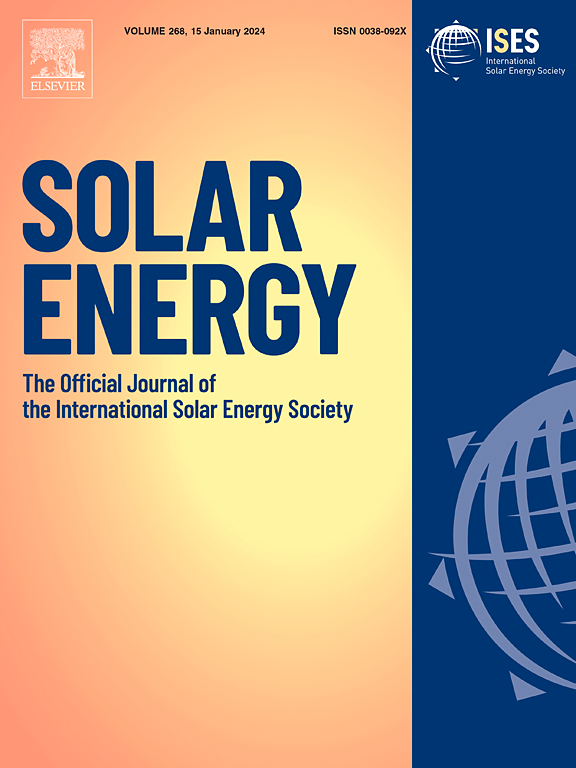评估作为光伏设计材料的硒化碳基量子点的电子和结构基础:DFT 和 ML 分析
IF 6
2区 工程技术
Q2 ENERGY & FUELS
引用次数: 0
摘要
我们对基于硒化碳的光伏(PV)材料的设计、发现和空间生成进行了一项新的研究。通过扩展受体并利用密度泛函理论(DFT)和机器学习(ML)分析,我们发现了具有显著光伏特性的新型 QDs。我们采用各种 ML 模型,将文献中 938 种相关化合物的激子结合能 (Eb) 与影响其性能的分子结构特征描述相关联。我们的研究证明了 ML 方法在简化设计和发现高效光伏材料方面的潜力。此外,RDKit 计算出的分子描述符与光伏参数的相关性显示,最大吸收(λmax)范围为 509-531 nm,光收集效率(LHE)高于 92%,开路电压(Voc)为 0.22-0.45 V,短路电流(Jsc)为 37.92-42.75 mA/cm2。利用夏伯法预测的功率转换效率(PCE)高达 09-13%。这项研究为基于分子描述符设计新型光伏材料铺平了道路,有望推动高效太阳能转换技术的发展模式转变。本文章由计算机程序翻译,如有差异,请以英文原文为准。
Evaluating the electronic and structural basis of carbon selenide-based quantum dots as photovoltaic design materials: A DFT and ML analysis
We present a new study on the design, discovery and space generation of carbon selenide based photovoltaic (PV) materials. By extending acceptors and leveraging density functional theory (DFT) and machine learning (ML) analysis, we discover new QDs with remarkable PV properties. We employ various ML models, to correlate the exciton binding energy (Eb) of 938 relevant compounds from literature with their molecular descriptors of structural features that influence their performance. Our study demonstrates the potential of ML approaches in streamlining the design and discovery of high-efficiency PV materials. Also the RDKit computed molecular descriptors correlates with PV parameters revealed maximum absorption (λmax) ranges of 509–531 nm, light harvesting efficiency (LHE) above 92 %, Open Circuit Voltage (Voc) of 0.22–0.45 V, and short Circuit (Jsc) currents of 37.92–42.75 mA/cm2. Their Predicted Power Conversion Efficiencies (PCE) using the Scharber method reaches upto 09–13 %. This study can pave the way for molecular descriptor-based design of new PV materials, promising a paradigm shift in the development of high-efficiency solar energy conversion technologies.
求助全文
通过发布文献求助,成功后即可免费获取论文全文。
去求助
来源期刊

Solar Energy
工程技术-能源与燃料
CiteScore
13.90
自引率
9.00%
发文量
0
审稿时长
47 days
期刊介绍:
Solar Energy welcomes manuscripts presenting information not previously published in journals on any aspect of solar energy research, development, application, measurement or policy. The term "solar energy" in this context includes the indirect uses such as wind energy and biomass
 求助内容:
求助内容: 应助结果提醒方式:
应助结果提醒方式:


